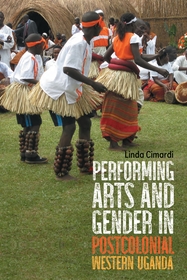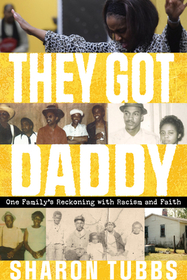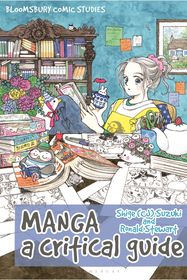
Children’s Literatures, Cultures, and Pedagogies in the Anthropocene
Multidisciplinary Entanglements
- Publisher's listprice GBP 85.00
-
40 608 Ft (38 675 Ft + 5% VAT)
The price is estimated because at the time of ordering we do not know what conversion rates will apply to HUF / product currency when the book arrives. In case HUF is weaker, the price increases slightly, in case HUF is stronger, the price goes lower slightly.
- Discount 20% (cc. 8 122 Ft off)
- Discounted price 32 487 Ft (30 940 Ft + 5% VAT)
Subcribe now and take benefit of a favourable price.
Subscribe
40 608 Ft

Availability
printed on demand
Why don't you give exact delivery time?
Delivery time is estimated on our previous experiences. We give estimations only, because we order from outside Hungary, and the delivery time mainly depends on how quickly the publisher supplies the book. Faster or slower deliveries both happen, but we do our best to supply as quickly as possible.
Product details:
- Publisher Bloomsbury Academic
- Date of Publication 15 May 2025
- Number of Volumes Hardback
- ISBN 9781350509979
- Binding Hardback
- No. of pages pages
- Size 236x160x20 mm
- Weight 540 g
- Language English
- Illustrations 20 bw illus 662
Categories
Long description:
Bringing together scholars from a diverse range of disciplines, this open access book explores how children's literature, and cultural experiences tailored to them, afford young people new ways of navigating a world facing impending environmental crisis. With chapters from researchers in Europe, North America, Australasia and Asia, and working in fields such as literary, cultural, childhood and education studies, it provides multidisciplinary perspectives, visions and practices on, and models for, how children might embrace hope rather than fear as they confront today's environmental issues. Starting and then moving out from stories to imagining and putting into practice more ethical ways of engaging with and being in the world, Children's Literature, Cultures and Pedagogies in the Anthropocene examines various forms of storytelling, learning, thinking, and teaching that ask what children can learn from each other, from intergenerational and interspecies engagement, from human and more-than-human teachers.
The chapters cover a huge variety of topics including: eco-pedagogy; depictions of food and malnutrition; engaging nature through graphic narratives; using indigenous children's stories to navigate the Anthropocene; how children's literature can enable eco-literate young people; social and environmental justice in Latinx literature; and how (re)reading popular dystopian works can help youth readers identify eco-critical hope in seemingly end-of-the-world narratives.
A model for how humanities scholarship can have an impact greater than itself, Children's Literature, Cultures and Pedagogies in the Anthropocene demonstrates how children's texts and cultures might encourage ways of living more ethically in a world constantly changing.
The ebook editions of this book are available open access under a CC BY-NC-ND 4.0 license on bloomsburycollections.com. Open access was funded by Wroclaw University, Poland
Table of Contents:
Introduction
Ch. 1: Thinking with Children's Cultures and Pedagogies in the Anthropocene - Terri Doughty (Vancouver Island University, Canada) with Justyna Deszcz-Tryhubczak (University of Wroclaw, Poland) and Janet Grafton (Vancouver Island University, Canada)
Section 1: Fictions of Consumption
Ch. 2: A Different Kind of Eco-text: Historical Entanglements with Children's Fiction - Janet Grafton (Vancouver Island University, Canada)
Ch. 3: Rickety Puppies, a Cow Called UNICEF, and a Carrot with Healthy Eyes: More-than-human Teachers and the Malnourished Child - A. McCarthy (University of Canberra, Australia)
Ch. 4: Worldhoods of Vulnerability: Eating and Parasiting (in) the Anthropocene - Emily Ashton (University of New Brunswick, Canada) and Audrey Aamodt (University of Regina, Canada)
Section 2: Multispecies and Intergenerational Kinships
Ch. 5: Making Kin in Moominvalley: An Ecocritical Reading of Tove Jansson's Moomin Books - Hanna Dymel-Trzebiatowska (University of Gdansk, Poland)
Ch. 6: Re-storying Plants: Plants as Friends, Metaphors, and Community in Trace Balla's Landing with Wings - Melanie Duckworth (Østfold University College, Norway)
Ch. 7: Swirling Safe-Space: Hope in Butterflies Belong Here (2020) - Nina Goga (Western Norway University for Applied Sciences, Norway)
Section 3: Response-ability on Indigenous Land
Ch. 8: Beyond the Animacy Divide with We Are Water Protectors: A Guiding Story for Kin-making in Fraught Times - Kathleen Forrester (Simon Fraser University, Canada)
Ch. 9: Response-able Encounters with The Lost Words - Jennifer MacDonald (University of Regina, Canada), Apooyak'ii/Tiffany Prete (University of Lethbridge, Canada), and Erin Spring (University of Calgary, Canada)
Ch. 10: A Thousand Pictures: Learning to See with Tlingit Art - Melvin Nowicki (Independent Scholar)
Ch. 11: Learning from the Kadars: How Children's Literature Can Productively Navigate the Anthropocene - Vera Verboom (Independent Scholar)
Ch. 12: Children's Literature as an Act of Defiance: My Place and the Rejection of "Eurocentric" Environmental Ideals - Sarah Mokrzycki (Victoria University, Canada)
Section 4: Eco-literacies, Ecopedagogies and More-than-human Teachers
Ch. 13: Gardening our Planet's Future: Teaching Environmental Literacy and Praxis in the Literature Classroom - Tzina Kalogirou (National and Kapodistrian University of Athens, Greece) and Eleni Mitsoula (National and Kapodistrian University of Athens, Greece)
Ch. 14: Becoming-with Dust and the More-than-human - Yanina Carrizo (RMIT University, Australia) and Daniel X. Harris (RMIT University, Australia)
Ch. 15: "We Will Make Mountains Green" Mapping Climate Change Awareness and Action with the Children of the Indian Himalayan Region of Uttarakhand - Diti Vyas (Anant National University, India) and Nidhi Vyas (Independent Scholar)
Ch. 16: Eco-literate Young People: Creative Community-engaged Research for Cultural and Social Sustainability - Amanda Wager (Vancouver Island University, Canada)
Section 5: Intergenerational Hope in the Anthropocene
Ch. 17: Generative (Re)Reading of Dystopian Young Adult Narratives - Andrea Casals Hill (Universidad Finis Terrae, Chile)
Ch. 18: Grandmother Yarns: For the Children of the Anthropocene - Affrica Taylor (Canberra University, Australia)
Ch. 19: Save the Chupacabras!: The Entwining of Social and Environmental Justice in Latinx Children's and Young Adult Literature - Jesus Montaño (Baylor University, USA)
Ch. 20: Speculating about Post-anthropocene Childhoods with Donna Haraway's "The Camille Stories": A Response from Children's Literature and Culture Studies - Justyna Deszcz-Tryhubczak (University of Wroclaw, Poland) and Macarena García González (Pompeu Fabra University, Spain)
Index








